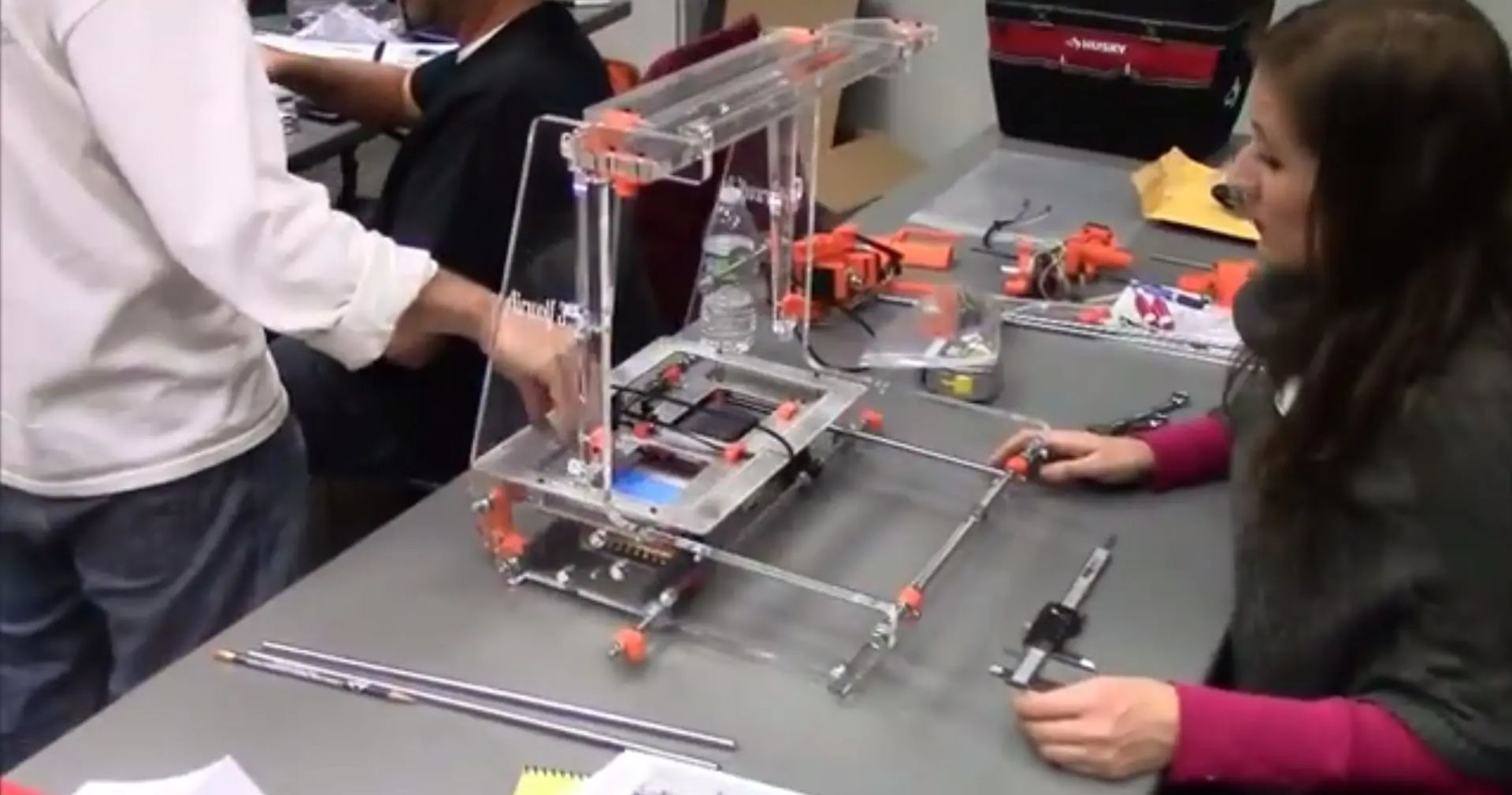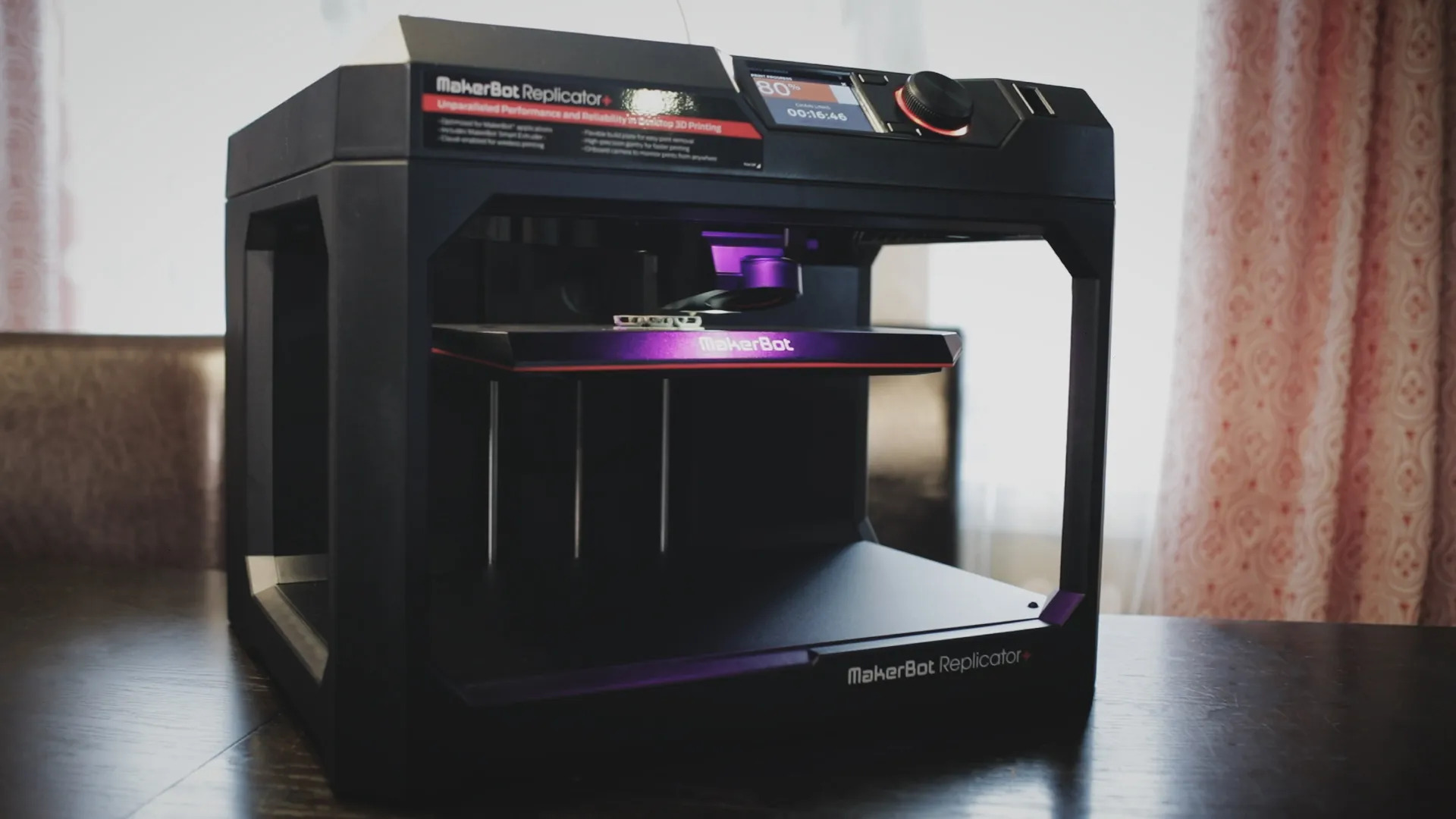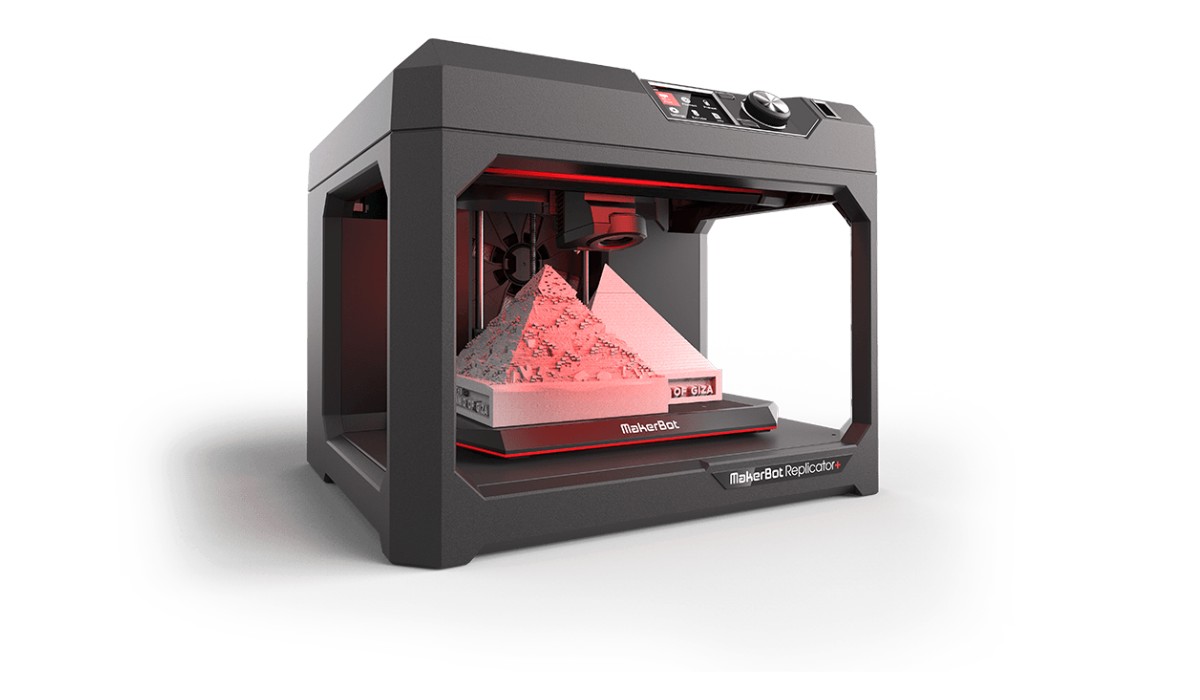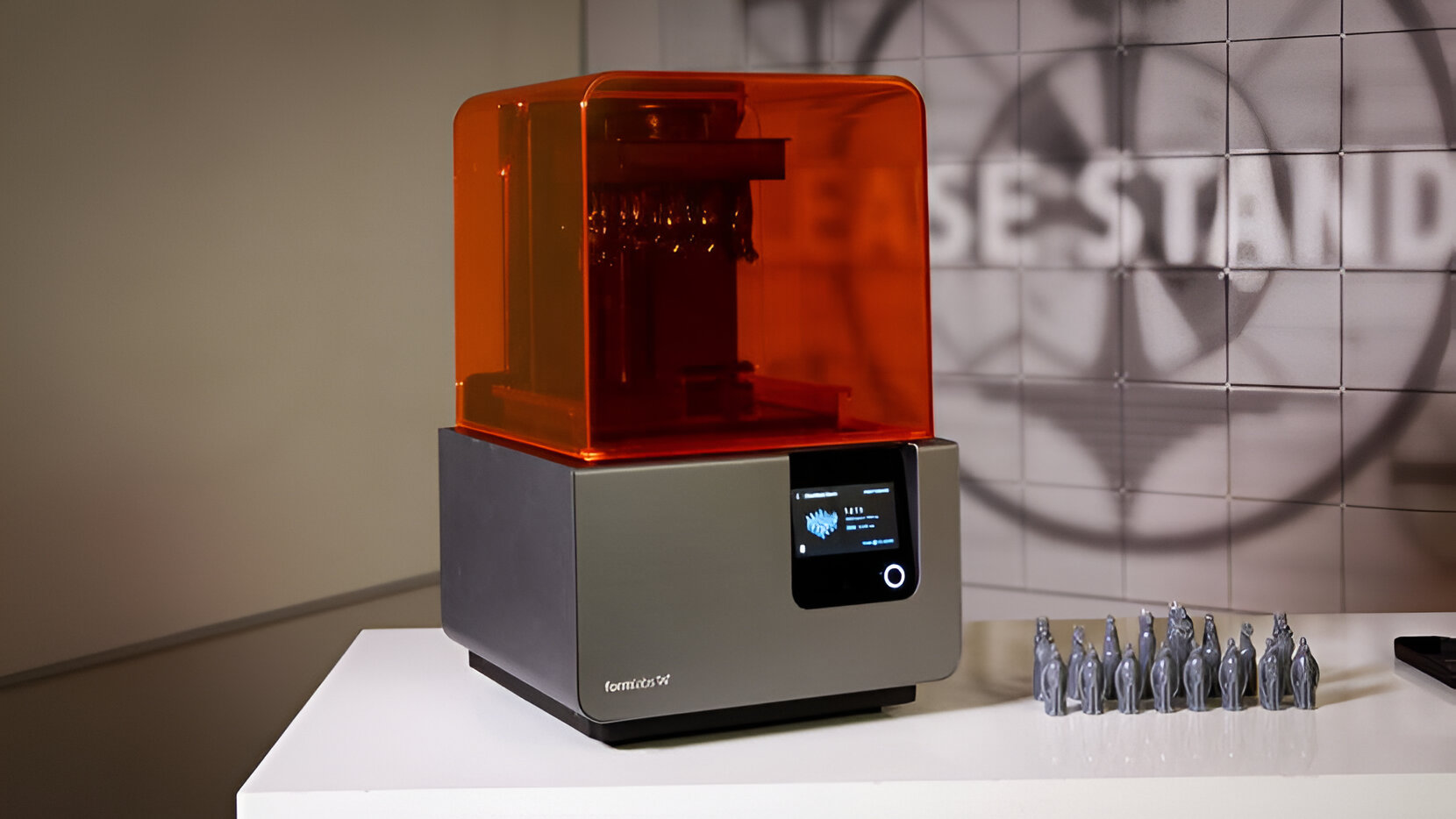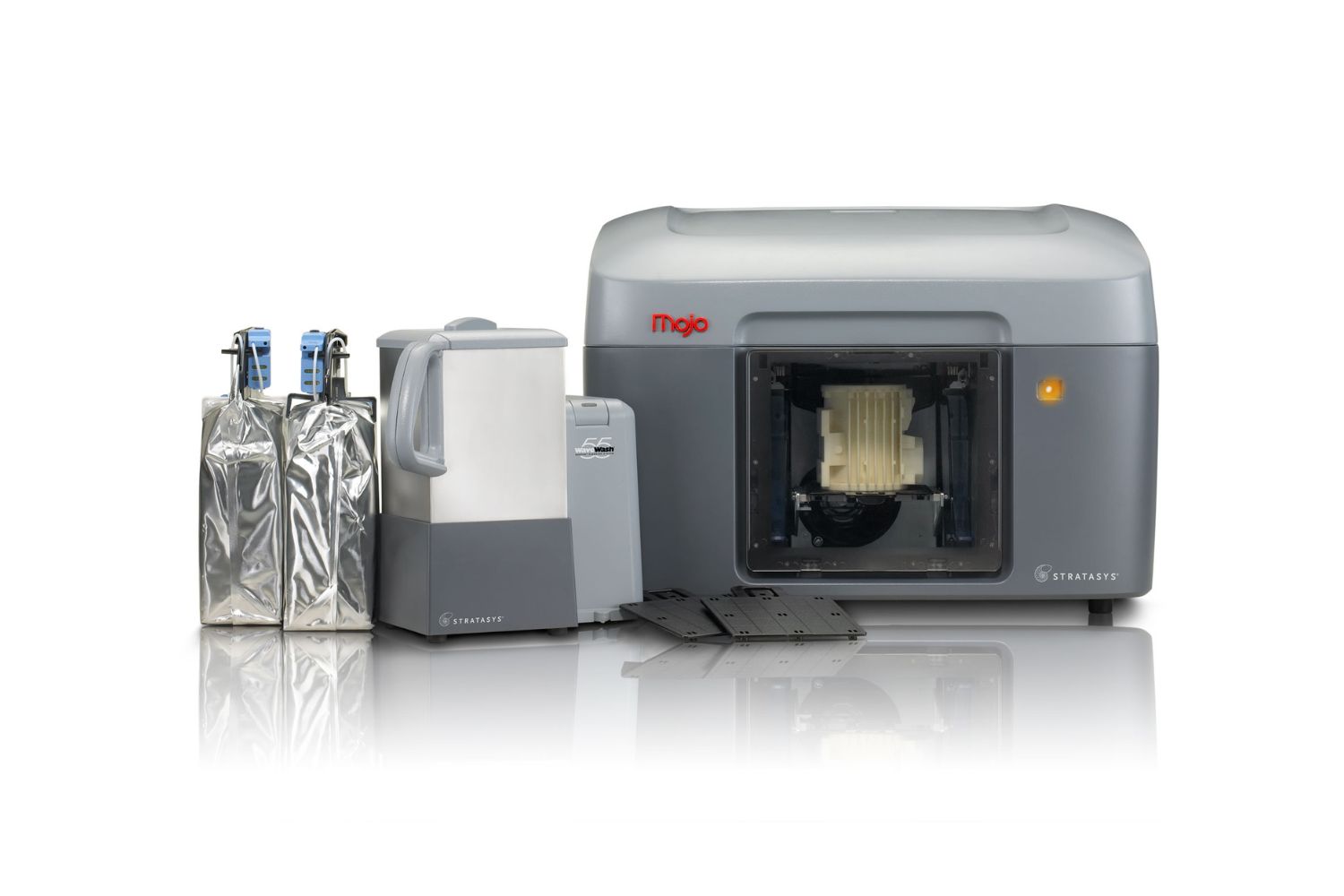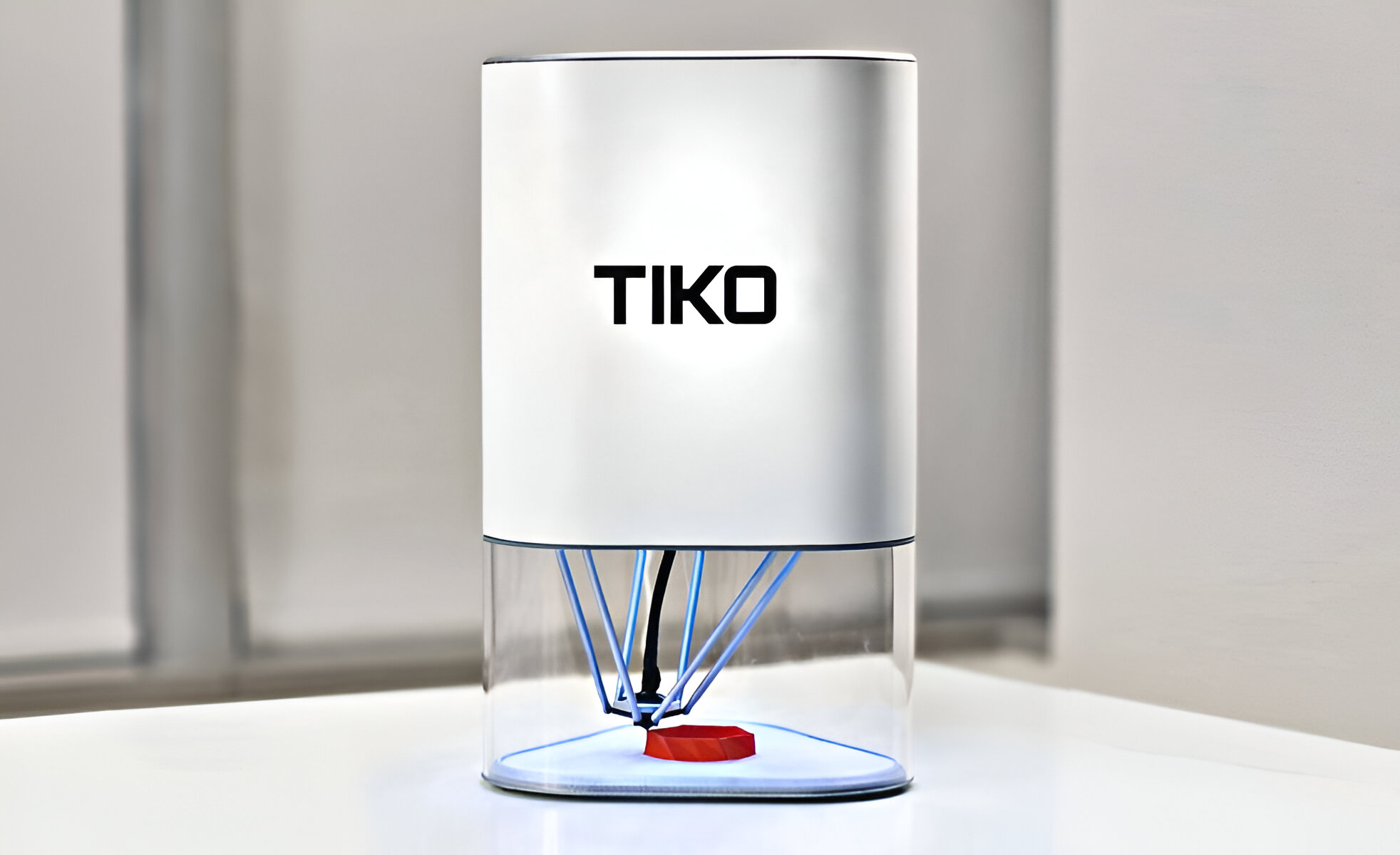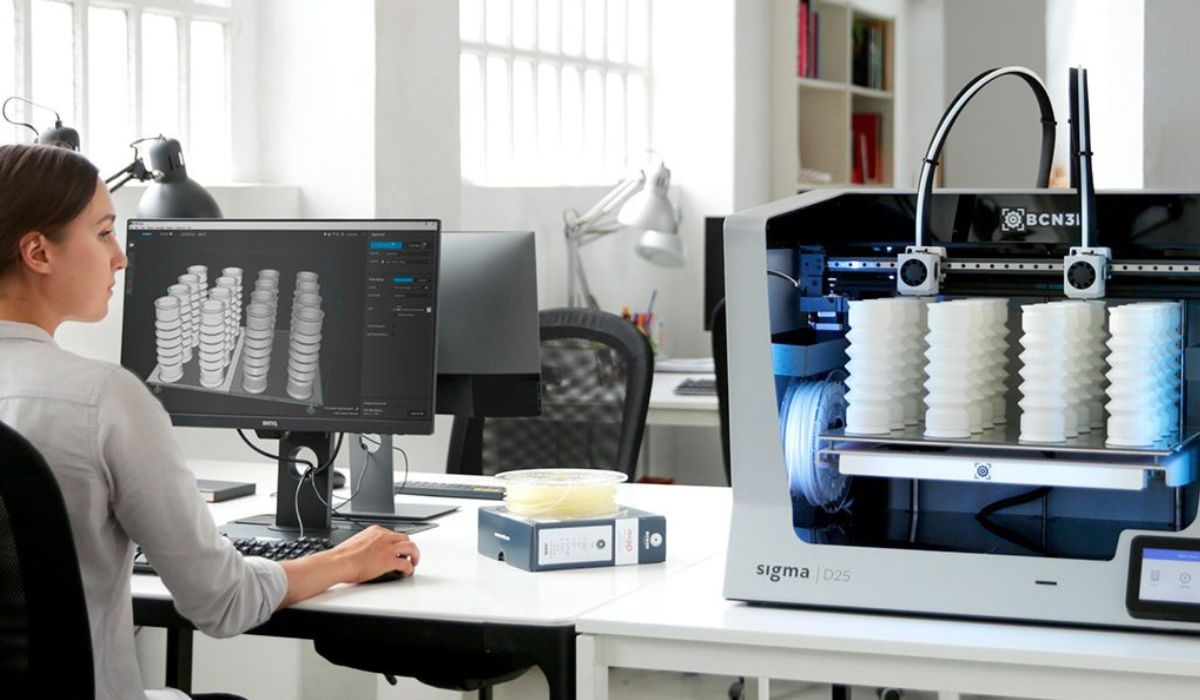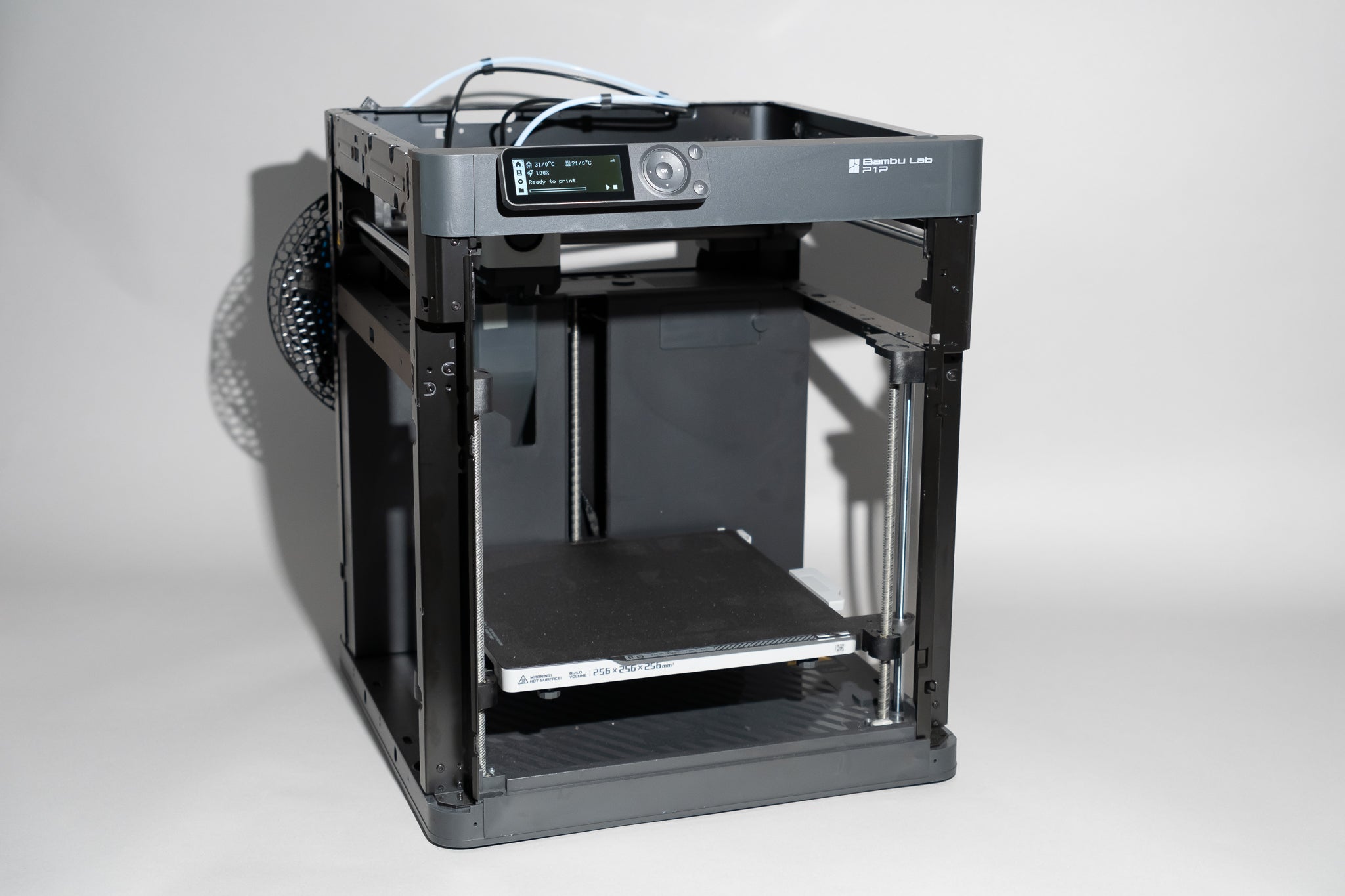Introduction
Welcome to the fascinating world of 3D printing in the classroom! As technology continues to advance at an incredible pace, it’s important for educators to adapt and incorporate innovative tools into their teaching methods. One such tool that has gained immense popularity is the 3D printer. This remarkable device allows students to bring their imagination to life by creating physical objects from digital design files.
Integrating 3D printing into the classroom offers a multitude of benefits. Not only does it ignite creativity and engagement among students, but it also promotes critical thinking, problem-solving skills, and collaboration. By providing a hands-on learning experience, 3D printing enables students to transform abstract concepts into tangible objects, thereby deepening their understanding of various subjects.
In this article, we will explore the numerous advantages of using a 3D printer in the classroom. We will also discuss how to set up a 3D printer, address safety considerations, and choose the right printer model suitable for educational settings. Furthermore, we will explore how to incorporate 3D printing into different lessons and integrate it across subjects, fostering a multidisciplinary approach to education.
Whether you’re an educator, a school administrator, or a curious individual exploring the potential of 3D printing in education, this article will serve as a comprehensive guide. We will delve into the practical aspects of utilizing 3D printing technology in the classroom and provide you with resources and tools to get started. So, fasten your seatbelts and get ready to embark on an exciting journey that will transform the way you teach and students learn!
Benefits of Using a 3D Printer in the Classroom
Integrating 3D printers into the classroom comes with a plethora of benefits for both students and educators. Let’s explore the advantages of using this cutting-edge technology:
- Enhanced Learning Experience: 3D printing brings abstract concepts to life by transforming them into tangible objects. Students can hold, examine, and interact with their creations, leading to a deeper understanding of the subject matter.
- Promotion of Creativity and Innovation: 3D printing enables students to unleash their creativity by turning their ideas into reality. It fosters a hands-on approach to learning, encourages problem-solving, and sparks innovative thinking.
- Engagement and Motivation: When students have the opportunity to see their designs come to life, it boosts their motivation and enthusiasm for learning. The excitement of watching a 3D printer build their creations fosters a positive classroom environment.
- Real-World Application: 3D printing mirrors the professional world where designs are transformed into physical objects. By using this technology, students can gain practical skills that are in demand in various industries.
- Collaboration and Teamwork: 3D printing encourages collaboration as students work together to design and create projects. It promotes teamwork, communication, and the exchange of ideas.
- Accessibility and Inclusivity: 3D printing allows for personalized learning experiences, accommodating students with different learning styles and needs. It provides opportunities for students to create adaptations and assistive devices.
- Multidisciplinary Approach: 3D printing integrates seamlessly across subjects, enhancing lessons in science, technology, engineering, arts, and mathematics (STEAM). It encourages cross-curricular connections and a holistic understanding of concepts.
- Preparation for the Future: As 3D printing continues to revolutionize various industries, including engineering, healthcare, and manufacturing, exposing students to this technology prepares them for the jobs of the future.
By incorporating 3D printing into the classroom, educators can create an engaging and dynamic learning environment that fosters creativity, critical thinking, and problem-solving. Students become active participants in their education, gaining valuable skills that will serve them well in their future endeavors.
Setting Up a 3D Printer in the Classroom
Setting up a 3D printer in the classroom requires careful planning and consideration. Here are the key steps to successfully integrate this technology into your learning space:
- Choose an Appropriate Location: Select a suitable area in the classroom that is well-ventilated and away from high-traffic areas. Ensure there is enough space for the printer and for students to observe the printing process.
- Secure a Reliable Power Source: 3D printers require a stable power supply. Invest in a surge protector to protect the printer from voltage spikes or invest in a UPS (Uninterruptible Power Supply) to prevent printing disruptions during power outages.
- Consider Noise Levels: 3D printers can be noisy during the printing process. If possible, place the printer in a location where the noise won’t disrupt other activities in the classroom. Ear protection can also be considered.
- Provide Adequate Filament Storage: Filament is the material used for printing. Store extra filament in a dry and sealed container to prevent moisture absorption, which can affect print quality.
- Calibrate and Level the Printer: Proper calibration and leveling of the printer bed are essential for achieving accurate prints. Follow the manufacturer’s instructions to ensure the printer is set up correctly.
- Install and Configure Software: 3D printing requires slicing software to convert 3D models into print instructions. Install the recommended software and configure the settings according to your printer’s specifications.
- Test and Troubleshoot: Before using the printer with students, take the time to test it and troubleshoot any issues. Familiarize yourself with common problems and solutions to minimize disruptions during classroom sessions.
- Establish Safety Guidelines: Create clear guidelines for students to follow when using the 3D printer. Emphasize the importance of proper handling, avoiding contact with hot components, and using tools responsibly.
- Supervise and Monitor: When students are using the 3D printer, ensure there is adult supervision to maintain a safe environment and address any issues that may arise.
By carefully setting up your 3D printer, you can create a conducive printing environment in the classroom. Remember to prioritize safety, maintenance, and efficient management of the printer to maximize its benefits for your students.
Safety Considerations
When introducing a 3D printer into the classroom, it is crucial to prioritize safety to ensure a secure learning environment. Here are some key safety considerations to keep in mind:
- Educate Students: Teach students about the potential risks and hazards associated with using a 3D printer. Explain the importance of following safety protocols and guidelines at all times.
- Proper Ventilation: Ensure that the 3D printer is placed in a well-ventilated area to prevent the accumulation of fumes. If your printer uses materials that emit harmful fumes, consider installing a ventilation system or utilizing air purifiers.
- Protective Gear: Encourage students to wear appropriate protective gear, such as safety glasses or goggles, when operating the 3D printer. This will help prevent eye injuries from flying debris or accidental contact with hot components.
- Hot Surfaces: Remind students to avoid touching any hot components, such as the heated print bed or extruder. Advise them to wait for the printer to cool down before attempting to remove prints or perform maintenance.
- Fire Safety: 3D printers generate heat and use electrical components, which can pose a fire risk. Avoid leaving the printer unattended during operation and have a fire extinguisher nearby as a precautionary measure.
- Maintenance: Regularly inspect and maintain the 3D printer to ensure it is functioning properly. Check for loose wires and damaged parts that may pose a safety hazard. If any issues arise, discontinue use until repairs or replacements are made.
- Adhere to Manufacturer Guidelines: Follow the manufacturer’s instructions and guidelines for the safe operation and maintenance of your specific 3D printer model. This will help mitigate potential risks and ensure optimal performance.
- Supervision: When students are using the 3D printer, ensure there is adult supervision to monitor their activities and intervene if necessary. This will help maintain a safe environment and prevent accidents.
By prioritizing safety and implementing appropriate precautions, you can create a secure and responsible 3D printing environment in your classroom. It is essential to educate students on best practices and foster a culture of responsibility and awareness when using this advanced technology.
Choosing the Right 3D Printer for the Classroom
When selecting a 3D printer for your classroom, it is important to consider various factors to ensure it meets the specific needs of your students and curriculum. Here are some key considerations to help you make an informed decision:
- Budget: Determine your budget for purchasing a 3D printer. Consider the initial cost of the printer itself, as well as ongoing expenses for filament, replacement parts, and maintenance.
- Size and Build Volume: Evaluate the size of the printer and the build volume, which refers to the maximum size of the objects it can print. Ensure that the printer can accommodate the types of projects your students will be working on.
- Print Quality: Assess the print quality of the printer by examining sample prints or looking at reviews and testimonials. A higher resolution and better print quality will yield more detailed and accurate prints.
- Ease of Use: Look for a printer that is user-friendly and has intuitive software. Consider the learning curve for both you and your students when it comes to operating and maintaining the machine.
- Software Compatibility: Ensure that the printer is compatible with the slicing and design software you plan to use in the classroom. It should support common file formats and be compatible with both Windows and Mac operating systems.
- Connectivity Options: Evaluate the connectivity options of the printer. USB and Wi-Fi connectivity allow for easy transfer of print files and remote monitoring of print progress.
- Reliability and Durability: Research the reputation of the printer brand and model for reliability and durability. Look for a printer that has a good track record of performance and longevity.
- Safety Features: Consider built-in safety features such as filament runout detection, thermal runaway protection, and automatic bed leveling. These features can enhance the safety of the printer and minimize potential risks.
- Technical Support: Look for a manufacturer that offers responsive technical support and has a strong online community for troubleshooting and support.
- Educational Resources: Check if the printer manufacturer provides educational resources, curriculum materials, or lesson plans that can support your teaching objectives and help you integrate 3D printing into your lessons.
By carefully considering these factors, you can select a 3D printer that is suitable for your classroom needs and aligns with your educational goals. Remember to thoroughly research and compare different options, read reviews, and seek recommendations from other educators to make an informed decision.
Incorporating 3D Printing into Lessons
Integrating 3D printing into lessons offers countless opportunities to enhance student engagement, foster creativity, and deepen understanding of various subjects. Here are some effective strategies for incorporating 3D printing into your curriculum:
- Design Thinking Challenges: Assign design challenges that require students to brainstorm, prototype, and 3D print their solutions. This cultivates critical thinking skills, problem-solving abilities, and encourages iterative design processes.
- Historical Replicas: Bring history to life by having students create replicas of artifacts, ancient structures, or historical figures using 3D printing. This hands-on approach enhances their understanding of historical concepts and promotes visual learning.
- Modeling in Science: Utilize 3D printing to create models of molecules, organ systems, or geological formations. This visual representation aids in comprehending abstract concepts and facilitates hands-on exploration during science lessons.
- Geography and Topography: Print topographical maps, cityscapes, or landmarks to help students better understand the physical features of different regions. They can even design and print their own models of architectural wonders.
- Mathematical Manipulatives: Create geometric shapes, puzzles, or 3D graphs to deepen students’ understanding of mathematical concepts. They can explore spatial relationships, volume calculations, and solid geometry through hands-on activities.
- Engineering Projects: Integrate 3D printing into engineering challenges, allowing students to design and print prototypes of structures or mechanisms. This encourages experimentation, problem-solving, and understanding of engineering principles.
- Language Arts Enhancements: 3D printing can be incorporated into language arts by having students create characters, settings, or props from literature. This adds a tactile element to storytelling and helps students better visualize the narrative.
- Artistic Expressions: Encourage students to explore their creativity by using 3D printing to bring their artistic visions to life. They can design and print sculptures, jewelry, or intricate patterns, fostering self-expression and artistic exploration.
- Social Studies Applications: Use 3D printing to create cultural artifacts, historical landmarks, or models of civilizations studied in social studies. This provides a tangible representation of the topics discussed in class and enhances cultural understanding.
- Cross-Curricular Projects: Encourage collaboration and integration of multiple subjects by having students work on projects that combine elements of different disciplines. For example, designing and printing a sustainable habitat can incorporate science, math, and environmental studies.
By incorporating 3D printing into your lessons, you can ignite creativity, facilitate deeper understanding, and provide students with hands-on learning experiences. It empowers them to become active contributors to their education and prepares them for the increasingly technology-driven world.
Integrating 3D Printing Across Subjects
One of the greatest advantages of 3D printing in education is its versatility across various subjects. By integrating 3D printing into different disciplines, you can create interdisciplinary connections and enhance student learning in a holistic manner. Here are some ways to integrate 3D printing across subjects:
- Science: Use 3D printing to create and analyze models of cells, organs, or organisms. Students can design and print anatomical structures for hands-on exploration, enhancing their understanding of biology and physiology.
- Mathematics: 3D printing offers opportunities for students to visualize mathematical concepts. Create geometric shapes, tessellations, or objects that require precise measurements and calculations to reinforce geometry, trigonometry, and other mathematical principles.
- Art and Design: Integrate 3D printing into art and design classes to explore new creative possibilities. Students can design and print sculptures, jewelry, or architectural models, blurring the boundaries between art and technology.
- History and Social Studies: Use 3D printing to recreate historical artifacts, monuments, or cultural objects. This enables students to engage with history in a tangible way, fostering a deeper understanding of different time periods and cultures.
- Engineering and Technology: 3D printing is a natural fit for engineering and technology education. Students can design and print prototypes, mechanisms, or architectural structures to bring their ideas to life and apply engineering design principles.
- Language Arts: Connect literature with 3D printing by having students create models of story settings, characters, or plot elements. This adds a tangible dimension to the storytelling process and stimulates creative thinking.
- Environmental Science: Encourage students to design and print models of sustainable architecture, eco-friendly products, or solutions to environmental challenges. This integrates science, engineering, and environmental consciousness.
- Career and Technical Education: 3D printing aligns well with career and technical education programs, offering practical skills in various industries. Students can learn about manufacturing processes, product design, and rapid prototyping.
- Music and Performing Arts: Explore the intersection of music and technology by 3D printing instruments, accessories, or stage props. This combines elements of design, engineering, and artistic expression.
- Physical Education: 3D printing can be utilized in physical education classes to create custom equipment, fitness trackers, or assistive devices for adaptive sports. This fosters a connection between technology and physical fitness.
By integrating 3D printing across subjects, you can create a dynamic and interconnected learning experience for students. It promotes critical thinking, problem-solving, and creativity while providing a hands-on approach to education. Students will gain a deeper appreciation for the interconnectedness of different disciplines and the role of technology in shaping our world.
Encouraging Creativity and Problem-Solving Skills with 3D Printing
One of the most significant benefits of incorporating 3D printing into education is its ability to foster creativity and develop problem-solving skills. By providing students with the opportunity to bring their ideas to life, 3D printing ignites their imagination and empowers them to become innovative thinkers. Here’s how 3D printing encourages creativity and problem-solving skills:
- Design Thinking: 3D printing promotes a design thinking mindset, encouraging students to identify challenges, brainstorm solutions, and iterate on their designs. It fosters a systematic approach to problem-solving and empowers students to become effective problem solvers.
- Hands-On Learning: 3D printing allows students to learn through hands-on experiences. They can experiment, make mistakes, and iterate their designs, fostering a culture of learning from failures and embracing the iterative design process.
- Customization and Personalization: With 3D printing, students can create custom and personalized objects that address specific needs or preferences. This encourages them to think critically about the needs of the end-user and design solutions accordingly.
- Visualization of Ideas: 3D printing enables students to visualize their ideas in a tangible form. It helps them bridge the gap between abstract concepts and physical objects, strengthening their ability to think spatially and convert ideas into reality.
- Collaboration and Communication: Working with 3D printing projects often involves collaboration and communication. Students learn to share their ideas, collaborate on designs, and provide constructive feedback, fostering valuable teamwork and communication skills.
- Prototyping and Iteration: 3D printing allows for rapid prototyping, enabling students to quickly iterate and improve their designs. This iterative process encourages critical thinking, analysis, and refinement of their solutions.
- Cross-Disciplinary Connections: 3D printing integrates well across different subjects, fostering cross-disciplinary connections. Students can apply their creativity and problem-solving skills to solve complex challenges that require knowledge from multiple disciplines.
- Real-World Application: With 3D printing, students gain exposure to the practical application of their ideas. They can see how their designs can be transformed into physical objects, bridging the gap between theoretical concepts and real-world solutions.
- Exploration of New Possibilities: 3D printing opens up a world of possibilities for students to explore new ideas, materials, and techniques. It encourages them to think beyond conventional constraints and pushes the boundaries of their creativity.
By integrating 3D printing into the classroom, educators can nurture creativity and problem-solving skills in students. It empowers them to be innovative thinkers, problem solvers, and effective collaborators. Through hands-on experiences and the ability to materialize their ideas, students develop crucial skills that will serve them well beyond the classroom and into their future endeavors.
Resources and Tools for 3D Printing in the Classroom
Integrating 3D printing into the classroom is made easier with the abundance of resources and tools available to support educators and students. These resources offer guidance, lesson plans, and access to a wealth of 3D models. Here are some valuable resources and tools for incorporating 3D printing in the classroom:
- Online Communities: Join online communities dedicated to 3D printing in education, such as forums and social media groups. These platforms provide a space for educators to share their experiences, seek advice, and exchange ideas.
- Design Software: Use user-friendly design software, such as Tinkercad or Fusion 360, to create 3D models. These tools are suitable for beginners and offer a range of design capabilities, from basic shapes to intricate designs.
- Online 3D Model Libraries: Access online repositories of 3D models, such as Thingiverse or MyMiniFactory. These websites offer a vast collection of free-to-download models for various subjects, making it easy to find models related to your curriculum.
- Curriculum Materials and Lesson Plans: Seek out curriculum materials and pre-designed lesson plans specifically created for 3D printing in education. Websites like Tinkercad for Teachers or Makers Empire offer resources designed to support educators in integrating 3D printing into their lessons.
- Professional Development Opportunities: Attend workshops, webinars, or conferences focused on 3D printing in education. These professional development opportunities provide valuable insights into best practices, instructional strategies, and the latest advancements in this field.
- 3D Printer Manufacturers: Many 3D printer manufacturers offer educational resources on their websites. They provide guides, tutorials, and technical support to help educators maximize the potential of their printers in the classroom.
- Local Makerspaces and Fab Labs: Explore the possibility of partnering with local makerspaces or fabrication laboratories (Fab Labs). These community-driven spaces often offer access to 3D printers and allow students to further explore their creativity alongside experts and other enthusiasts.
- STEM and Maker Education Organizations: Organizations like STEMfinity and Maker Education Initiative offer resources, project ideas, and funding opportunities for educators interested in incorporating 3D printing into their STEM or maker education programs.
- Peer Educators and Teacher Networks: Connect with other educators who have experience with 3D printing in the classroom. Sharing ideas and collaborating with peers can provide inspiration, guidance, and valuable insights.
- Local Partnerships: Explore potential partnerships with local businesses, universities, or community organizations that have access to advanced 3D printing technologies. These collaborations can offer students exposure to industry applications and advanced printing techniques.
By utilizing these resources and tools, educators can have a solid foundation to integrate 3D printing effectively into their classroom. Whether it’s finding 3D models, accessing lesson materials, or seeking assistance, these resources can support educators in enhancing the learning experience and empowering students to explore the world of 3D printing.
Conclusion
Integrating 3D printing into the classroom is an exciting and valuable educational endeavor. By harnessing the power of this innovative technology, educators can create engaging, hands-on learning experiences that foster creativity, critical thinking, and problem-solving skills.
We explored the numerous advantages of using a 3D printer in the classroom, including enhanced learning experiences, promotion of creativity and innovation, and real-world application of concepts. We discussed the importance of carefully setting up the printer, considering safety considerations, and selecting the right 3D printer model for educational settings.
Furthermore, we explored how 3D printing can be incorporated into different subjects and lessons, encouraging creativity and problem-solving skills across disciplines. We also highlighted the wealth of resources and tools available to support educators in implementing 3D printing in their classrooms.
As technology continues to evolve, it is crucial for educators to adapt their teaching methods to provide students with the skills needed for the future. 3D printing offers a unique opportunity to bridge the gap between theoretical concepts and real-world applications, while also nurturing students’ creativity, critical thinking, and collaboration skills.
By embracing 3D printing in education, educators can create a dynamic and inclusive learning environment that prepares students for the rapidly changing world. As students design, create, and problem-solve with 3D printing, they develop the skills and mindset necessary for success in their academic and professional lives.
So, what are you waiting for? Take a leap into the world of 3D printing and unlock the vast potential it holds for transforming education and inspiring the minds of the next generation.







